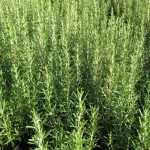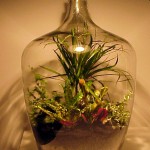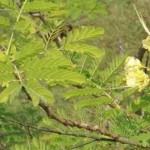Snail Cultivation (Heliciculture)
Even today, snail cultivation has got a very real economic significance. In France alone, 40,000 tonnes of snails are eaten per year. A large part of those are, even today, snails picked in nature and imported from Eastern Europe and Turkey. From an ecological point of view this is intolerable. From the consumer’s point of view it also is, because those snails are not retraceable. Nobody knows where exactly they come from, sometimes not even what kind of snails they are.
Continue reading
Chicory cultivation methods and environmental conditions
Chicory vegetable
Breed: politicians Curry
Differentiation of leaves are easy to grow as Chicory for greens wrapping called ssam in Korea
Characteristic
– Leaves is zignag, green, somewhat sharp shape
– Slightly bitter taste and very good taste as greens
Rayibel Rosemary Herb cultivation methods and environmental conditions
Rayibel Rosemary Herb
Varieties: rayibel Rosemary (herbs)
Scientific name: Rosmarinus officinalis
Origin: Mediterranean
All year round Meaning: good memories
Characteristic
– Proper germination temperature: 20 to 25 degrees
– Keys grew up about 1.5 meters, about 2-4cm, while headed becomes two peaks
– Flowers bloom throughout the winter-spring, white, purple, pink, purple, varying in – Started three years flowering
– A strong perennation even in Cold (-5 ‘C ~ 0’C) Continue reading
Mini tomato cultivation methods and environmental condition
Agronomic characteristics
Name : Cherry tomato
Scientific name: Lycopersicum esculentum MILL.
Growth temperature:
– Budding condition: 25 ~ 30 ℃
– Seedling condition: 20 ~ 25 ℃
– Flowering condition: 20 ~ 25 ℃
– Growing condition: 17 ~ 27 ℃
– Gwabidae condition: 25 ~ 30 ℃
– Save condition: 4 ℃
– Cultivated soil acidity, considerable growth in the range of pH 6.5 ~ 7.0 Good Continue reading
How to make a Bottle Garden
Bottle Garden always attracts interest. True bottle garden has a stopper of some kind on the top. It is a sealed environment. Moisture in air recirculates when it condenses. So you do not need to water plants.
The plants you use will depend on the type of bottle garden you make, do not use flowering plants. Clear glass is better than coloured glass and heavenly tinned glass. No chemical fertilizer should be used. If you cannot find a suitable bottle, try a sweet display jar.
Other materials required for arranging bottle garden are funnel, PVC pipe, Gravel, Charcoal teaspoon, for long stick, sieved mud, dry leaf mould, brick pieces and white pebbles. Continue reading
How to Arrange Dish Garden
Dish gardens are grown with cacti, succulents, foliage plants succulents such as cacti succulent crassula cacti succulents,echeverria, Sansevieria. Foliage plants such as Arabia, Dieffenbachia, miniature Varieties of coleus dracaena of Duranta, tradescantia, peperomia, spider plant and wondering Jews can
Propagation Method of Caesalpinia Sappan (Sappan Wood)
Caesalpinia Sappan is a small thorny tree found throughout India. Caesalpinia Sappan is a hardy tree. It is found growing in wide range of climate. Sappan grows best in tropical and sub tropical regions with dry and hot climate.
Cultivation Method of Caesalpinia Sappan
The seeds should be treated with concentrated sulphuric acid for 6 minutes followed by soaking in GA? at 300 ppm and should be planted in poly bags. The seedlings are raised during April, May months. The plants are planted to the main field after 75 to 90 days. Space between each plant should be 4 meters. They are filed with top soil, dry cow dung and sand. During the dry season the crop is irrigated bi-weekly. Continue reading




